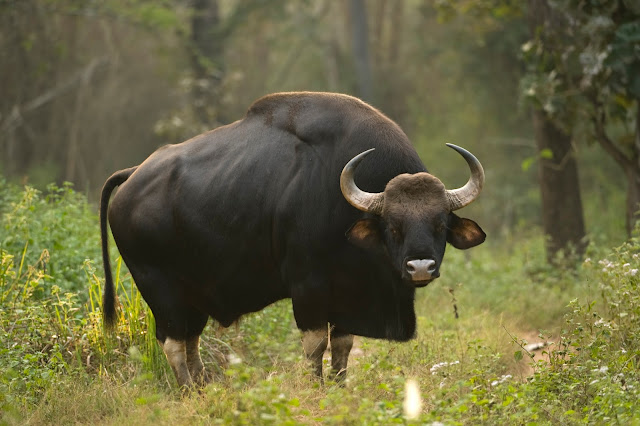The Living Gold of a Tree - Golden Langur of India
In my previous post, I mentioned about "The Lion of a tree - Lion tailed Macaque monkey".
In this post, we will know about "The Living Gold of a Tree - Golden Langur of India".
Introduction Part
- Gee's Golden Langur, or simply the golden langur, is an old world monkey found in a small region of Western Assam, India and in a neighbouring foothills of the Black Mountains of Bhutan.
- It is one of the most endangered primate species of India.
- Long considered sacred by many Himalayan people , the golden langur was first brought to the attention of the western world by the naturalist E. P. Gee in the 1950s.
- in a part of Bhutan, it has hybridised with the capped langur.
Physical Characteristics
- The coat of the adult golden langur ranges from cream to golden, on its flanks and chest the hairs are darker and often rust coloured ; the coats of the juveniles and females are lighter, silvery white to light buff.
- The golden langur has a black face and a very long tail measuring up to 50 cm in length.
- The long tail of the golden langur helps it in balancing itself while leaping across the branches of trees.
- It is mainly found inhabiting the forests of India that have high trees.
- Size : head to Body length between 49 to 72 cm
- Weight upto 9.5 to 12 kg
Behaviour and Ecology
- For the most part, the langur is confined to high trees where its long tail serves as a balancer when it leaps across branches.
- During the rainy season it obtains water from dew and rain drenched leaves.
- Its diet is herbivorous, consisting of ripe and unripe fruits, mature and young leaves, seeds, buds and flowers.
- It generally lives in troops of about 8 (but sometimes upto 50) with several females to each adult male.
- The smallest golden langur troop was composed of four individuals, while the largest had 22, giving an average value of 8.2 individuals per troop.
- The adult gender ration was 2.3 females to every male, although the majority of groups had only one adult male.
Distribution
- The regions of its distribution are very small. the main region is limited to an area approximately 60 miles square bounded on the south by the Brahmaputra River, on the east by the Manas River, on the west by the Sankosh River, all in Assam, India and on the north by the Black mountains of Bhutan and the Secondary region , 200 miles to the south- southeast, is in a small portion of the northwest part of the Tripura state.
- These biogeographical barriers are believed to have led to the radiation of species from the closely related capped langur.
- The best rang maps so far are Choudhury (2000) and Choudhury (2008).
Conservation
- In 1988, two captive groups of golden langurs were released into two protective areas of the western region of the state of Tripura, India.
- As of 2000, one of these groups, consisting of six (and possibly eight ) individuals in the Sepahijala wildlife sanctuary , had survived.
- Gee's golden langur is currently in endangered; a total Indian population in 2001of 1,064 individuals, in 130 groups, was recorded.
- Of these, approximately 60 % were adults indicating a relative lack of infants and juveniles.
- The relative death of infants and juveniles indicate a declining population and the habitat being degraded by human activity.
- A fragmented but protected population in a rubber plantation Nayakgaon, Kokrajhar district of Assam increased in population from 38 individuals in 1997 to 52 in 2002.
- The population has also adapted to feeding on dry rubber seeds.





Comments
Post a Comment